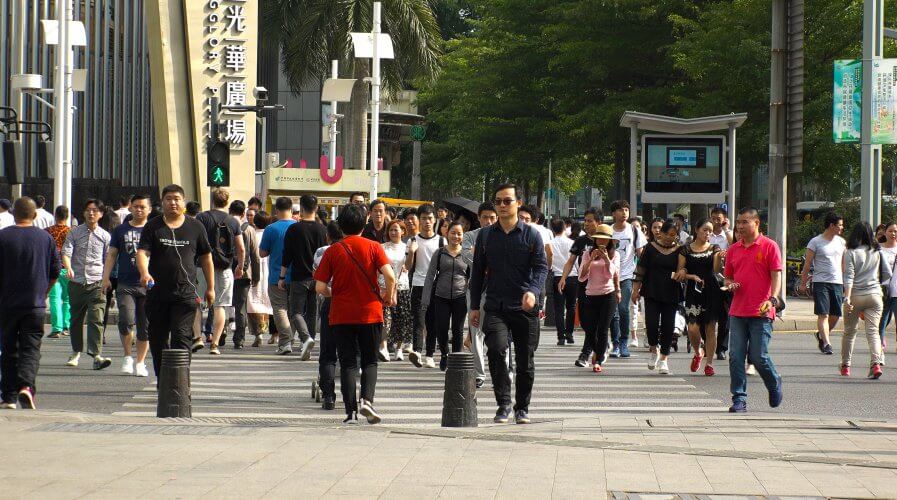
Surveillance system using “gait recognition” networks are already watching citizens on the streets of Beijing and Shanghai. Source: Shutterstock.com
Pep in your step: Chinese technology IDs people by how they walk
CRIMINALS beware! Those balaclavas may not conceal your identities as well as they used to.
Authorities in China can now identify people even when their face is not visible, thanks to a new surveillance tool: “gait recognition” software.
The software, which uses people’s body shape and the way they walk to recognize someone – is currently being deployed in Shanghai and Beijing as part of China’s broader push to integrate artificial intelligence technology to establish a data-driven surveillance system.
Huang Yongzhen, the CEO of Watrix AI, the firm that developed the system, said it is capable of identifying people from up t0 50 meters away, even with face covered or back turned.
This innovation could potentially fill the gap left by prevailing facial recognition technology which requires high-resolution, close-up snapshots of a person’s face.
“You don’t need people’s cooperation for us to be able to recognize their identity,” Huang was quoted as saying by AP.
He assured that the technology is also robust and fool-proof as it can’t be duped by someone faking a limp, hunching or walking with splayed feet, because the system analyzes the entire body.
Chinese social commentator and columnist, Shi Shusi, meanwhile is not surprised at the rate at which the technology is catching on in China compared to other parts of the world.
He attributed the fast growth of the system to Beijing’s emphasis on social control.
“Using biometric recognition to maintain social stability and manage society is an unstoppable trend. It’s great business,” Shi added.
The gait recognition tech, however, is not something new. Various agencies in Japan, the United Kingdom, and the United States have been studying the technology for more than a decade.
Academics from Osaka University suggested the use of similar surveillance solutions way back in 2013 but Japanese authorities only ran a pilot project and chose not to scale it up at the time.
Attempts to monetize the technology has also been futile.
FST Biometrics, an Israeli firm, shut down earlier this year after running into technical difficulties with the system.
The University of Southampton’s subject matter expert Mark Nixon said that computationally, the technology is more complicated than other biometrics.
Nixon said, “It takes bigger computers to do gait because you need a sequence of images rather than a single image.”
At the moment, Watrix’s software is not able to identify people in real-time. It takes about 10 minutes to crawl through one hour of video.
It extracts the silhouette of persons from the uploaded video and analyzes the movement, creating models of the way people walk.
The software is not as good as facial recognition, admitted Huang, but added that its 94 percent accuracy is good enough for it to be used in the commercial space, especially in tandem with facial recognition.
He believes that gait technology will enhance public safety, pointing out that it can be used to spot people in distress, among other things.
Huang was left academia, to co-found Watrix in 2016. The company was part of the Chinese Academy of Sciences’ incubator program.
Last month, Watrix announced that it had raised US$14 million to develop its gait recognition technology and fast-track its sale.
In a country like China, where the government constantly seeks to improve measures to control and protect its 1.3 billion residents, such sophisticated surveillance systems will always be in high demand.
READ MORE
- The criticality of endpoint management in cybersecurity and operations
- Ethical AI: The renewed importance of safeguarding data and customer privacy in Generative AI applications
- How Japan balances AI-driven opportunities with cybersecurity needs
- Deploying SASE: Benchmarking your approach
- Insurance everywhere all at once: the digital transformation of the APAC insurance industry






